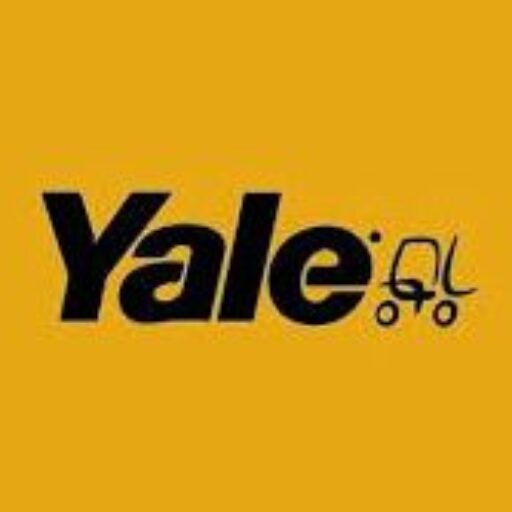Your cart is currently empty!

Yale Forklift Parts Manuals: Your Guide to Genuine Orders
In the world of material handling, maintaining the efficiency and reliability of forklift equipment is crucial. For businesses relying on Yale forklifts, accessing genuine parts quickly and accurately is essential to minimize downtime and ensure optimal performance. This is where parts manuals become invaluable. These manuals serve as comprehensive guides, providing detailed information and part numbers necessary for ordering the right components. In this article, we will explore the significance of parts manuals, how to navigate them effectively, the role of part numbers, and how they streamline the ordering process for genuine Yale parts.
Understanding the Importance of Parts Manuals
Parts manuals are indispensable tools for anyone responsible for the maintenance and repair of Yale forklifts. These manuals contain detailed diagrams and descriptions of every component within the forklift, making it easier to identify parts that need replacement or servicing. Having access to a parts manual ensures that technicians can quickly and accurately diagnose issues, reducing the time spent on troubleshooting. This efficiency is crucial in industries where every minute of downtime can lead to significant productivity losses.
Moreover, parts manuals help maintain the integrity of the forklift by ensuring that only genuine Yale parts are used for repairs and replacements. Using authentic components not only preserves the warranty but also guarantees the longevity and reliability of the equipment. By providing a clear and organized reference, parts manuals prevent the accidental use of incorrect or substandard parts, which could potentially lead to further damage and costly repairs.
In addition to aiding in maintenance, parts manuals serve as educational resources for technicians and operators. By familiarizing themselves with the components and their functions, they can gain a deeper understanding of the machinery they work with daily. This knowledge empowers them to perform basic troubleshooting and maintenance tasks independently, enhancing their overall competence and confidence.
For fleet managers and procurement specialists, parts manuals are vital for budgeting and inventory management. Knowing exactly which parts are required, along with their corresponding part numbers, allows for precise forecasting and inventory control. This foresight helps in maintaining optimal stock levels, avoiding overstocking or stockouts, and ensuring that essential parts are readily available when needed.
Navigating Yale Forklift Parts Manuals Effectively
Navigating a parts manual may initially seem daunting due to the sheer volume of information it contains. However, understanding its structure can make the process straightforward and intuitive. Typically, parts manuals are organized by sections corresponding to different systems within the forklift, such as the engine, hydraulic system, or electrical components. Each section is further divided into subsections that focus on specific parts or assemblies.
To effectively navigate a Yale forklift parts manual, it’s essential to start by identifying the forklift model and serial number. This information is crucial because parts can vary significantly between models and production years. The manual’s index or table of contents is a valuable resource for quickly locating the section relevant to the part you need. Familiarizing yourself with the manual’s layout and terminology will save time and minimize frustration.
Another effective strategy is to utilize the diagrams and exploded views provided in the parts manual. These visual aids offer a clear representation of how components fit together, making it easier to identify the part in question. Cross-referencing these diagrams with the parts list allows for accurate identification and ensures that no components are overlooked during the ordering process.
For those who prefer digital resources, Yale offers online access to parts manuals through their official website. This digital format can be particularly advantageous for quickly searching specific part numbers or keywords. Additionally, online manuals are often updated with the latest information, ensuring that users have access to the most current data available. For more information, visit Yale Lift Truck.
How to Use Part Numbers for Genuine Yale Parts
Part numbers are the key to ordering genuine Yale parts efficiently and accurately. Each part number is a unique identifier assigned to a specific component, ensuring that the correct item is ordered without ambiguity. These numbers are typically found in the parts manual alongside the part description and diagram. Understanding how to locate and use these numbers is crucial for anyone involved in the maintenance or procurement of forklift parts.
When using a parts manual, start by identifying the component you need to replace or repair. Once identified, locate the corresponding part number in the manual. This number is your assurance that the part you order is genuine and designed to fit your specific forklift model. It’s essential to double-check the part number against the forklift’s model and serial number to avoid any discrepancies.
Having the correct part number streamlines communication with suppliers and dealers. When placing an order, providing the part number eliminates guesswork and reduces the likelihood of errors. This precision is particularly beneficial when dealing with complex assemblies or when parts have similar names but different specifications.
In addition to facilitating orders, part numbers are invaluable for tracking and inventory management. By maintaining a record of parts and their numbers, businesses can monitor usage patterns, predict future needs, and ensure that critical components are always in stock. This proactive approach minimizes downtime and keeps operations running smoothly.
Streamlining Orders with Accurate Part Identification
Accurate part identification is the cornerstone of efficient and streamlined ordering processes. By ensuring that the correct parts are ordered, businesses can save both time and money. Parts manuals play a vital role in this process by providing detailed information and part numbers that facilitate precise identification.
One of the primary benefits of accurate part identification is the reduction of order errors. Incorrect orders can lead to significant delays and additional shipping costs, as well as the potential for further equipment damage if the wrong part is installed. By using the parts manual to verify part numbers and descriptions, these issues can be avoided, ensuring that the right part is delivered the first time.
Additionally, streamlined ordering processes contribute to improved supplier relationships. When businesses consistently place accurate orders, it builds trust and reliability with suppliers, potentially leading to better pricing, faster delivery times, and preferential treatment. This positive relationship is beneficial for long-term procurement strategies and overall operational efficiency.
Finally, accurate part identification supports sustainability efforts by reducing waste. Ordering only the necessary parts minimizes excess inventory and prevents the disposal of unused or incorrect parts. This eco-friendly approach aligns with the growing emphasis on sustainability in industrial operations. For more details on ordering genuine Yale parts, visit Yale Lift Truck.
In conclusion, parts manuals are indispensable resources for anyone involved in the maintenance and procurement of Yale forklift components. By providing detailed diagrams, descriptions, and part numbers, these manuals ensure that genuine parts are ordered accurately and efficiently. Understanding how to navigate these manuals, utilize part numbers, and streamline the ordering process is essential for minimizing downtime, reducing costs, and maintaining the reliability of Yale forklifts. Embracing these practices not only enhances operational efficiency but also contributes to the sustainability and longevity of material handling equipment.
